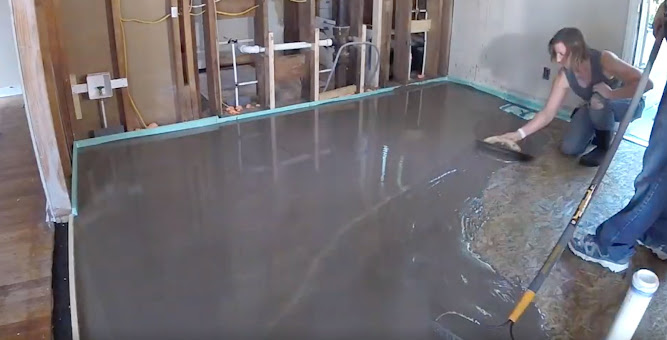How Self-Leveling Underlayment Is A Material Used To Level Uneven Floors And Other Surfaces?
Self-leveling underlayment is a material that can be used to level uneven floors and other surfaces. It is commonly used to cover sloping or low areas and can be installed over concrete, wood, drywall, tile and other surfaces. It can also be used as a base layer before applying other flooring materials like carpet, sheet vinyl and tile.
The material of Self Leveling Dubai is typically mixed using a mortar or portland cement mixer to create the correct consistency. When it is poured onto a surface, it spreads out and seeks its own level, making the job less labor intensive than with other types of underlayment.
Typically Mixed Using A Mortar
It's best applied in thin layers, so if the floor has undulations greater than 1/8 ", more underlayment may be needed to achieve an even floor. If the surface is not already smooth, it's important to use a straightedge to mark the low spots before spreading the material out and screeding it. Screeding allows the material to reach all low spots before it's troweled.
Once the underlayment is applied, it should be allowed to dry and cure for 2-24 hours before it's used to install any floor coverings. It is recommended that the underlayment be protected from drafts during this time to allow it to fully cure and prevent premature cracking or gouging.
It's Best Applied In Thin Layers So If The Floor Has Undulations
Typical installation procedures include the application of a primer to seal off the substrate, a base layer that is rake-applied and spike-rolled, and a finish coat to provide wear and chemical resistance. These steps help ensure the self-leveling underlayment will adhere properly to the underlying substrate and resist cracking.
A product like TEC's Multipurpose Primer, Self Leveling is available at many independent and big box stores, should be used on the surface before the self-leveling underlayment is applied. This primer helps to retain the moisture within the underlayment to help it to cure, as well as act as a bonding agent to make sure the SLU bonds to the substrate.
Wood Without Causing Stains Or Scratches
Before installing the self-leveling underlayment, the floor must be cleaned and sanded. This will ensure that the underlayment is smooth and free of abrasions and other contaminants. It should be sealed off from the outside with a polyurethane or epoxy coating to prevent staining from water and dirt.
In the case of a wood floor, it's a good idea to protect the wood from moisture or water damage during the self-leveling process. This will also help the underlayment to bond with the wood and not cause stains or scratches.
It's best to work in pairs, since it's only about 10-20 minutes before it starts to set and harden. It's also helpful to have an extra pair of hands to mix and apply the compound.
Conclusion:
There are a variety of different self-leveling underlayment options, and it's best to consult with the manufacturer of the product you are considering. This will help you determine which one is right for your project and ensure the job is completed properly.


.jpg)
Comments
Post a Comment